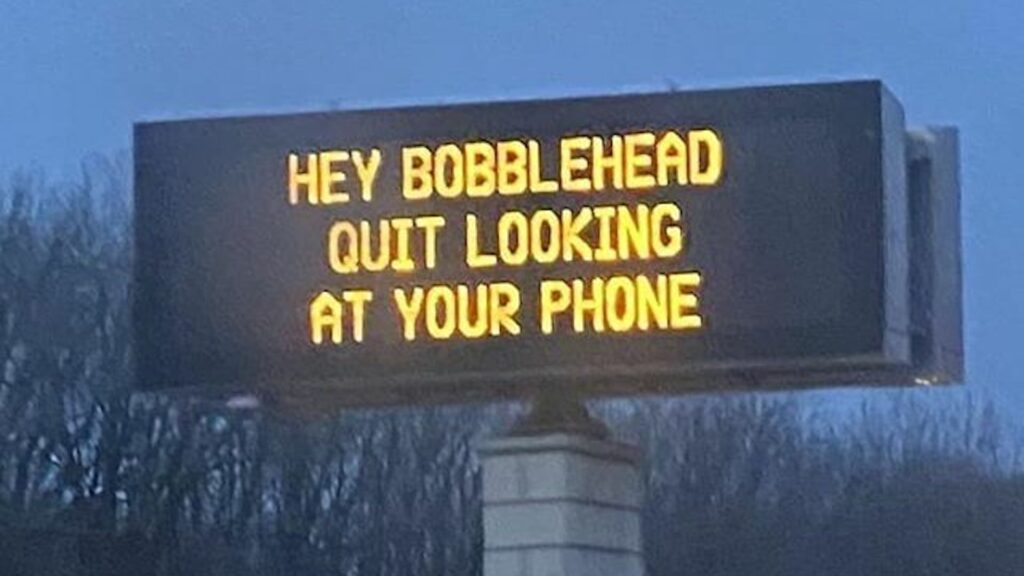The U.S. Department of Transportation Wants to Pump the Brakes on Funny Highway Signs

Highways everywhere feature variable message signs (VMS) informing drivers of traffic delays, weather conditions, crashes, and safety reminders. However, the U.S. Department of Transportation (DOT) isn’t too pleased with the creative liberties some highway workers are taking to flex their funny bones. Often times many VMS operators will add a touch of humor to remind drivers to stay safe behind the wheel with messages like “Four I’s in Mississippi, Two eyes on the road” and “Luck of the Irish won’t help you with a DWI.” Apparently, the Department of Transportation isn’t laughing.
RELATED: This Street Artist Vandalized a Freeway Sign That Actually Improved Traffic
Department of Transportation vs Humor
A subsection of the DOT known as the Federal Highway Administration recently issued new guidelines for safety messages on variable message signs and funny messages aren’t allowed under the claim that they are too distracting.
Of course, it can be said that these messages are meant to promote safe driving, regardless if they are funny or not. If anything, funny signs are more memorable and can deliver the message better than just plainly saying it. A lot of it depends on whether drivers will get the joke, or if it goes over their heads, resulting in the message getting lost in the process.
Perfect creative sign from the Highway guys. #sign #signs #funnysign #FUNNYSIGNS #funny #marketing101 #marketing #signofthetimes #nowdays #highway #drivers https://t.co/xKmkFp5q70 pic.twitter.com/zffJz1ZSFw
— Keith Lashley (@Keithlashley00) January 8, 2020
Are These Signs Helpful or Distracting?
According to the Wall Street Journal, the Ohio Department of Transportation displayed a sign that read “Life is fra-gee-lay, drive safe” over the holidays. For those who know, this is a reference to the 1983 film A Christmas Story. Drivers who got the reference saw it as cute and timely for the holiday season. But those unfamiliar with the movie would read “fra-gee-lay” as eyebrow-raising gibberish. According to a 2022 DOT study, many drivers did not understand the funny messages being displayed on these signs.
Another proposed downside to these signs is that if the message is something drivers would want to share with followers on social media, they may hold out their phones to take a picture. Thus, raising the risk for unsafe driving behavior.
While it is impossible to measure whether drivers are less engaged as a result of these signs, state DOTs make the argument that these humorous messages are better at getting points across. In an interview with the WSJ, Tripp Shealy, Virginia Tech professor of civil and environmental engineering said, “My recommendation would be that they’re useful, and humor should be allowed, from what we studied.”
In the end, it seems that the best course of action would be for VMS operators to write out humorous messages that are universally easier for drivers to understand, rather than dull and straightforward ones.









